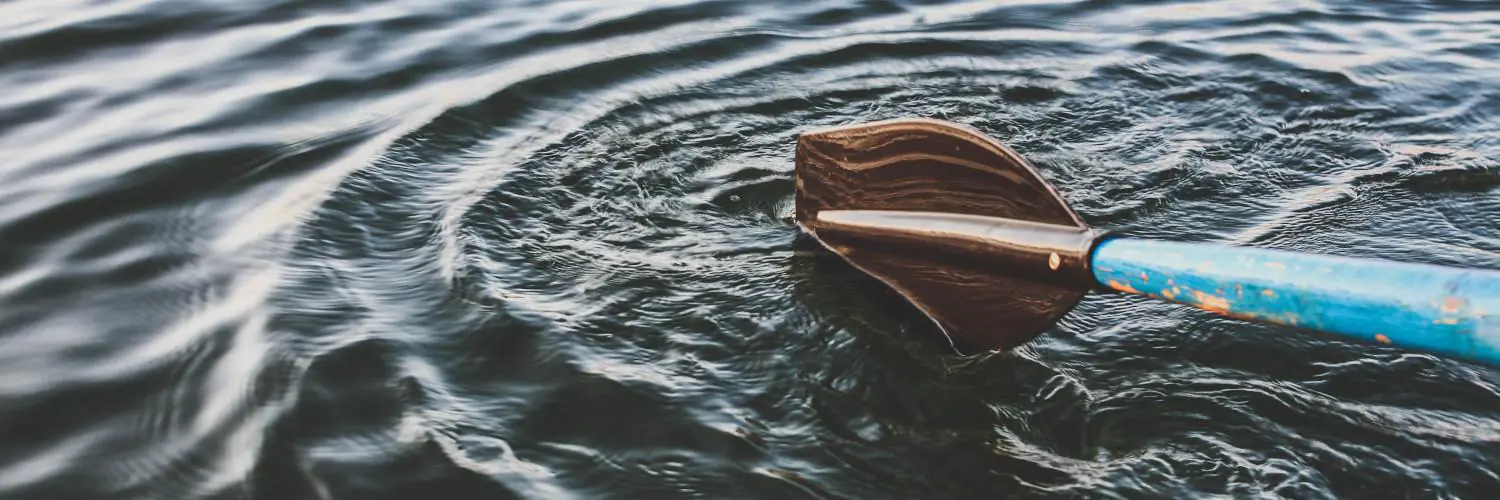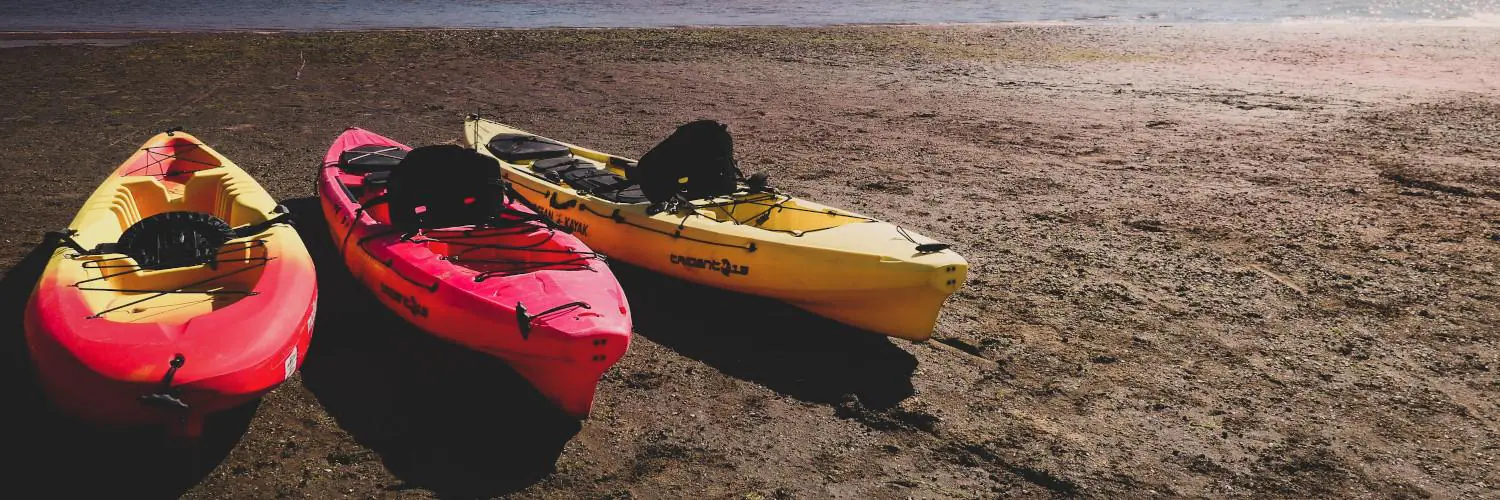The 2024 Paris Olympics will introduce a thrilling new water sport: kayak cross. This event combines elements of canoe slalom and sprint racing, creating a fast-paced and exciting competition. Kayak cross features four athletes racing simultaneously through an obstacle course with upstream and downstream gates.
Kayak cross starts with a dramatic 15-foot drop into the water. Paddlers then navigate the course, jostling for position and attempting to cross the finish line first. The event requires a mix of speed, skill, and strategy as competitors must avoid collisions while maneuvering through the gates.
This addition to the Olympic program brings a fresh and dynamic element to the canoe slalom discipline. Kayak cross promises to be a crowd-pleaser, with its blend of technical paddling and head-to-head racing format. Fans can look forward to watching top athletes from around the world compete in this new and exciting Olympic sport.
Table of Contents
Origins and Evolution of Kayak Cross
Kayak cross emerged from whitewater slalom racing to become an exciting new Olympic sport. It blends elements of traditional kayaking with head-to-head racing on challenging rapids courses.
Historical Background
Kayak cross has its roots in whitewater slalom kayaking. The International Canoe Federation (ICF) first introduced kayak cross as “extreme slalom” in 2015. They aimed to create a more thrilling version of canoe slalom.
The sport features four kayakers racing down a whitewater course at the same time. Racers must navigate gates and waves while jostling for position. The first kayaker to cross the finish line wins.
Early kayak cross events took place at ICF World Cup races. The sport quickly gained fans due to its fast pace and exciting format.
Development into an Olympic Sport
The International Olympic Committee added kayak cross to the Paris 2024 Olympic program in 2018. They wanted to bring more youth-focused, action sports to the Games.
Kayak cross will make its Olympic debut with men’s and women’s events. The races start with a 15-foot drop into the water. This unique start adds extra excitement for viewers.
To prepare, the ICF has run kayak cross World Cup events since 2017. These competitions helped refine the rules and format. They also gave athletes a chance to train in the new discipline.
Olympic kayak cross aims to showcase kayaking skills in a TV-friendly format. The head-to-head racing and whitewater obstacles promise to deliver thrilling Olympic moments.
Guide to Kayak Cross Rules and Equipment
Kayak cross is an exciting new Olympic event combining speed and skill. Athletes use specialized gear and follow specific rules as they navigate a challenging course.
The Essential Equipment
Kayak cross requires specialized equipment. Competitors use short, maneuverable kayaks designed for quick turns. These kayaks are usually around 2 meters long and made of lightweight materials.
Paddles are crucial. Athletes use double-bladed paddles to steer and propel their kayaks. The paddles are often made of carbon fiber for strength and low weight.
Safety gear is a must. Racers wear helmets, life jackets, and protective clothing. This gear keeps them safe during the fast-paced event.
Rules and Scoring in Kayak Cross
Kayak cross races happen on whitewater courses. Four athletes compete at once, starting from a raised platform. They must navigate both downstream and upstream gates as they race to the finish line.
Points are given for speed and skill. The first racer to cross the finish line wins. Penalties are added for missing gates or touching them with boat or body.
Eskimo rolls may be needed if a kayak flips. This skill lets racers quickly right their boat and keep racing. The ability to perform a kayak roll can be the difference between winning and losing.
Notable Athletes in Kayak Cross
Kayak cross has attracted top canoe slalom competitors from around the world. These athletes bring a mix of speed, agility, and tactical skills to this new Olympic event.
Rising Stars and World Champions
Jessica Fox stands out as a dominant force in kayak cross. The Australian paddler won gold in both C-1 and K-1 events at the Paris Olympics. She’s also made waves in kayak cross competitions.
Mallory Franklin from Great Britain is another name to watch. She’s shown impressive form in recent kayak cross events, building on her strong canoe slalom background.
Joseph Clarke, the 2016 K-1 Olympic champion from Great Britain, has adapted well to kayak cross. His powerful paddling style gives him an edge in the shoulder-to-shoulder racing format.
Olympic Hopefuls
Evy Leibfarth is a rising star for Team USA. At a young age, she’s already competed in the Olympics and is now focusing on kayak cross for future Games.
Giovanni De Gennaro from Italy is known for his speed on the water. He’s been working hard to master the unique skills needed for kayak cross success.
Casey Eichfeld, an experienced American paddler, brings years of canoe slalom knowledge to kayak cross. His tactical approach could pay off in this new event.
Maialen Chourraut, a Spanish veteran with multiple Olympic medals, is also testing her skills in kayak cross. Her experience could be valuable in high-pressure race situations.
Kayak Cross at Paris 2024
Kayak cross makes its Olympic debut at Paris 2024. This exciting new event adds a fast-paced, action-packed element to the canoe slalom program.
The Venue: Vaires-sur-Marne Nautical Stadium
The Vaires-sur-Marne Nautical Stadium will host the kayak cross competition. This state-of-the-art venue is located about 30 kilometers east of Paris.
The stadium features a 250-meter long whitewater course. It has drops, waves, and eddies that challenge even the most skilled paddlers.
Athletes will navigate through gates and obstacles while racing head-to-head. The course design ensures thrilling competitions for both participants and spectators.
Competition Structure and Qualification
Kayak cross follows a unique format. Four athletes race simultaneously in heats, with the top two advancing to the next round.
The competition starts with time trials to seed racers. Then, knockout rounds lead to quarter-finals, semi-finals, and finals.
To qualify, athletes must earn points at World Cup events and World Championships. Each country can send up to one man and one woman to compete in kayak cross at Paris 2024.
The event promises intense rivalries and nail-biting finishes. Team USA and Team GB are among the nations vying for medals in this new Olympic discipline.
The Future of Kayak Cross
Kayak cross is set to make a big splash at the Paris 2024 Olympics. This exciting new event combines speed, skill, and strategy on the water.
The International Canoe Federation sees kayak cross as a way to attract younger fans. Its fast-paced action and head-to-head format make it very watchable.
Olympic organizers hope kayak cross will boost interest in canoe sports. The event’s adrenaline-pumping nature could draw new audiences to the Games.
Athletes are training hard to master this challenging discipline. Many see it as a chance to win additional medals in canoe slalom.
As kayak cross gains popularity, more countries may invest in training programs. This could lead to wider global participation in future Olympics.
The sport may evolve with new rules or course designs. These changes could make races even more thrilling for spectators.
Kayak cross has roots in extreme slalom racing. Its Olympic debut marks a milestone in the sport’s growth from niche competition to global stage.
Looking ahead, kayak cross could inspire new water sports events. Its success may pave the way for more dynamic, spectator-friendly Olympic additions.








